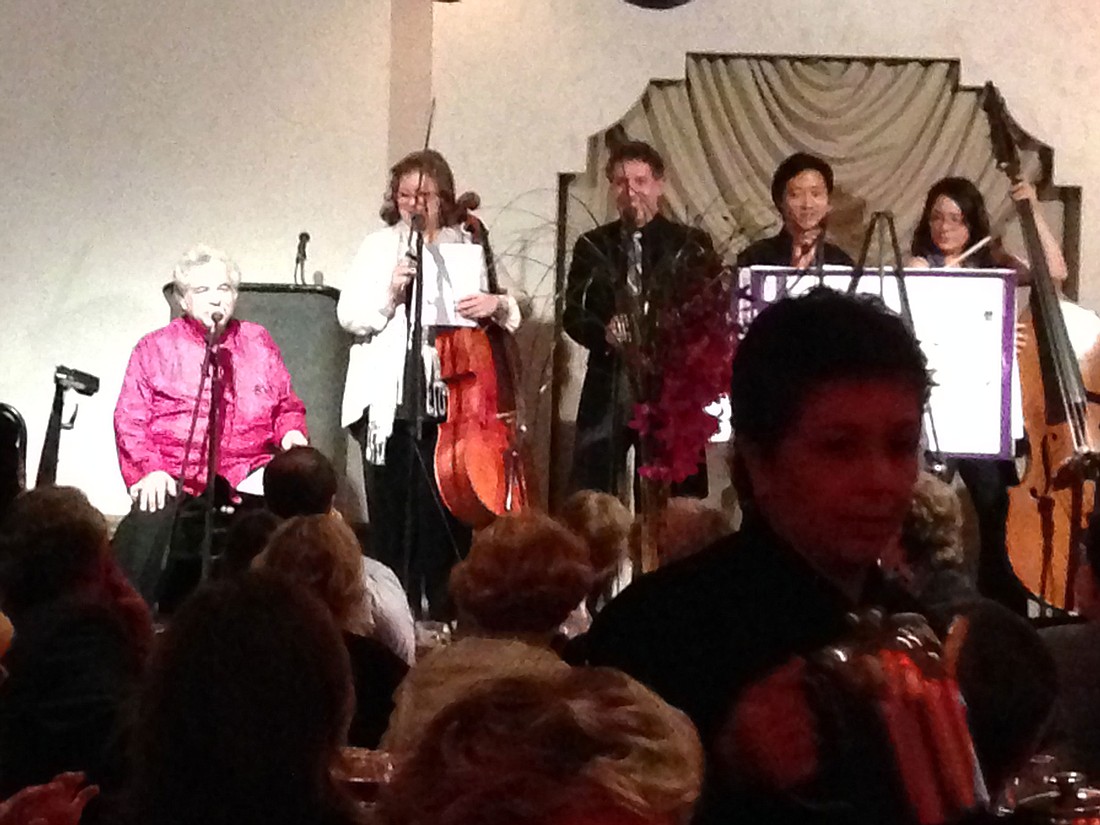- November 24, 2024
-
-
Loading

Loading

As we were fighting the crowds getting to the Sarasota Opera House for the Perlman Music Program’s Celebration Concert, I worried that, after 11 years of these performances, there might not be anything new to say. I thought, this could be same old, same old.
But music doesn’t work that way. When it’s well done it’s always fresh, always new. So, while the format was the same, the performances were full of beans, and I realized, if it ain’t broke, don’t fix it.
As always, Toby and Itzhak Perlman started the concert by joining the nearly 40 so-called “student” (don’t let age fool you) string players in the chorus for a short program of choral music. Why do they have these brilliant violinists, violists and cellists sing? Because singing instills instrumentalists with the concept of breathing and phrasing, so important to all musicians. Remember, these young instrumentalists already have excellent, if not perfect, pitch. What they don’t necessarily have is beautiful vocal tone, the idea of breath control, a knowledge of foreign languages or an assured certain stage deportment, as important for fiddlers as singers.
Standing in front of an audience with poise and grace is an art in itself and, usually, singers — because they have to communicate not just pitches but also words, movement and audience connection — are schooled in that behavior earlier than instrumentalists. But instrumentalists need it, too. Music is all about communication, and the sooner musicians learn there’s more to it than technique, the better they’ll be as professional performers. It takes a package to be a great artist, and instrumentalists must learn the art of “singing,” just as singers must learn the art of using their voices as instruments. Enough said.
Patrick Romano, the PMP chorus master, is from Juilliard and is used to working with young voices. This year, with an "Agnus Dei" and "Dona Nobis Pacem" by Hummel, a gorgeous "Abendlied" by Rheinberger, a vibrant madrigal by Morley and the final choruses from Handel’s “Messiah,” Romano brought out immaculate pitch and excellent training from people who don’t really sing. Sure, the tone was rough. But standing in quartets, their consonants were together, vowels matched, and they made real music. In fact, the Morley was about as good as any madrigal group I’ve heard in years. And anyone who could take the finale of “Messiah” at the clip taken by Romano deserves to be given a great round of applause.
As quickly as the young instrumentalists hopped off their risers, the choral setting vanished and was replaced with orchestra chairs and stands so the string players could return for what they’re really trained to do.
This season, the PMP String Orchestra offered Bach’s Brandenburg Concerto No. 5, which is scored for strings, keyboard (piano, in this case, played by the excellent John Root), flute and violin. Nicholas Johnson, who just got his master’s from Juilliard, was the flutist, and the violin solos were taken, phrase by phrase, by the individual members of the PMP violin section. You could hear the lessons they’d learned from singing because most of them breathed into their solos, an interesting followup and raison d’etre for the earlier part of the program.
Following the Bach were two movements from Verdi’s one and only String Quartet. I’ve known this work for years but liked it much more in this arrangement for string orchestra. It has more depth when played by multiple string instruments, and sections of the movements were not only operatic (think “Rigoletto”) but also echoed the more exposed sections of Verdi’s “Four Sacred Pieces,” not to mention the sheen of Dvorak’s “Serenade for Strings.” Unlike the arrangement for string orchestra of, say, the Mendelssohn octet, this arrangement of the Verdi quartet worked well, and I’d love to get my hands on a recording of the whole thing in this setting. Of course, the sound that came from the Perlman group was the kind of string sound for which many a major orchestra would kill. And Perlman, himself, was no slouch in the conductor’s role; he held everything nicely together and made music rather than showpieces for individuals.
This year’s encore, or “dessert,” as Perlman put it, was a fun, enthusiastic performance of “Hoe Down,” from Copland’s “Rodeo.” And at the gala dinner following the performance we were treated not only to Perlman’s “Perl-tones” doing doo-wop but also to the whole chorus fervently flaunting the vocal version of Rossini’s Overture to “The Barber of Seville.” Watch out. These are professional string players to be reckoned with.